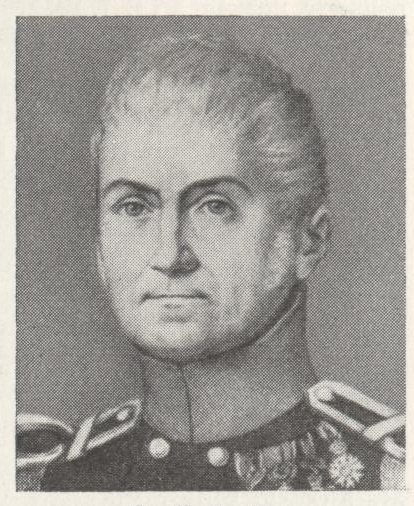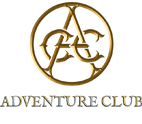Johann Gottfried Tulla
Member from 1801 – 1828


It is an impenetrable jungle. Creepers and climbing plants, grass a metre high, ferns and reeds of all kinds wind between the dense trees. The river meanders through the area, looping several times, flowing out into hundreds of different arms, forming thousands upon thousands of islands that nobody could survey, or even count. Where the water retreats, it leaves areas of deep swamp where every step becomes dangerous, and putrid, poisonous fumes rise from below: They kindle a deadly fever in humans. Swarms of gnats and other vermin breed in the humid heat and plague anyone who ventures here, eager for their blood.
This is not in fact an excerpt from an ACE expedition report, for example, to the Amazon region, but instead how Johann Gottfried Tulla described the situation in his home of Baden, along the Rhine, when he first visited the ACE in 1801. The minutes of his speech are now being kept in the ACE archives.
The young officer and engineer had been sent to Paris to study by Margrave Karl Friedrich. He was supposed to deepen his already rich knowledge of hydraulic engineering for the benefit of the modern Baden state at a unique new university. Revolutionary theoretical knowledge was also tested in practice at the École Polytechnique, where the most renowned scientists of the time were ushering in a new technological age.
But even among these visionaries, Tulla’s bold ideas often met with incomprehension. Only one of his professors listened to him and invited him to a secret meeting of the Adventure Club of Europe, where one can be open to ideas that others would dismiss as unbelievable or impossible, according to the professor, who was a member of the club.
While listening to reports of worldwide expeditions and unheard-of new inventions in an elegant Parisian salon, even Tulla found himself between fascination and disbelief. At the same time, he felt encouraged to express his own ambitious plan, which can be read in the following log:
Above all, the Rhine brings devastating floods from year to year. The floods devour fertile farmland and tear entire villages apart.
But we, Mesdames et Messieurs, are now living in the 19th century!
We no longer have to bow to the whims of nature. Today we have the technical capability and, I would like to say, therefore also the moral obligation to control such raging currents.
We will create a whole new bed for the river! A straight course, based on our own predictions and calculations. This is the only way to tame the river, to transform it from an unpredictable destructive force into a lifeline.

Straighten a river like the Rhine, and give it an artificial bed over hundreds of miles? If Tulla had even hinted at something like that elsewhere in the world, he would have been accused of megalomania.
The ACE members, however, responded enthusiastically.
Tulla was unanimously accepted into the club and received every conceivable type of support: In the secret archives of the ACE, he looked drawings of ingenious canal systems of the Maya. Prototypes of the most precise measuring devices were presented to him, and the ACE president personally drew up a letter of recommendation that would open the right doors for him on the French side of the river. After all, the Rhine ran along the border, and it would only be possible to straighten it with cooperation from France.
Inspired, encouraged, and determined to put his plan into practice, Tulla returned to his homeland of Baden. He would need a lot of patience to persuade them: indeed at court, the plan was initially considered impractical, with too high a cost. To the church it appeared to be an unacceptable interference with creation. The French prefects on the other side of the Rhine met the young German with suspicion. And the population feared for their livelihood, as the new course of the river may cross their villages and fields.
But Tulla worked tirelessly for years, then decades, against all resistance. He carried out surveys, drew maps, developed plans and appealed everywhere with them. He cleverly used the knowledge and relationships of the ACE, and soon found himself on friendly terms with the French prefects, not least because of the ACE president’s advocacy. The idea that this monstrous project could be jointly mastered became more and more popular in both countries.
Since he lacked qualified colleagues to implement the plan, Tulla founded an engineering school in Karlsruhe based on the example of the École Polytechnique. He won prominent visiting professors and was even able to persuade the legendary Eulenstein brothers to occasionally give lectures. In return, through his good relations with the state, he provided them with funds for the construction of their voletarium and brought them into the ACE.
It was a sociable evening with the Eulensteins, at least it is said, that was decisive in providing the breakthrough for his plan: After a diplomatic visit to France, Tulla, the brothers and their good friend Paul Mack were invited to the Ollweiler winery for a drink.
They enjoyed the wine, sang songs in both Badisch and French, and had a lively discussion about the one question that still stood in the way of the project: Even if the calculations were correct, the plans were precise enough and the decision-makers had now been convinced – how would they be able to cope with the immense excavation work required for hundred-miles-long artificial river bed? There was a lack of funds and workers; who would be carrying out this superhuman work?
Suddenly Tulla jumped up, exclaiming with excitement, “Why, the Rhine itself, gentlemen!”
He quickly asked for a map and drew straight lines through the Rhine loops at three or four strategic points: “We don’t even have to dig everything ourselves. We only make brief breakthrough points here, here and here – and then the river, led by us, will find its new bed all by itself!”
Tulla’s plan worked. In 1817 the first excavation was made near Karlsruhe, and many more followed. Little by little the river found its new course. Over the years, all the predicted improvements came about: floods did not appear, swamps, formerly a source of epidemics, had dried up, and new land was gained that was now safe from flooding. The tamed Rhine became navigable and developed into the important trade and travel route that it is to this day.
Tulla’s work, which was sparked by an ACE meeting, has survived the centuries.

